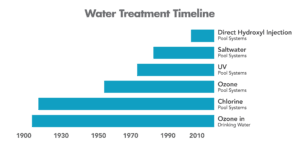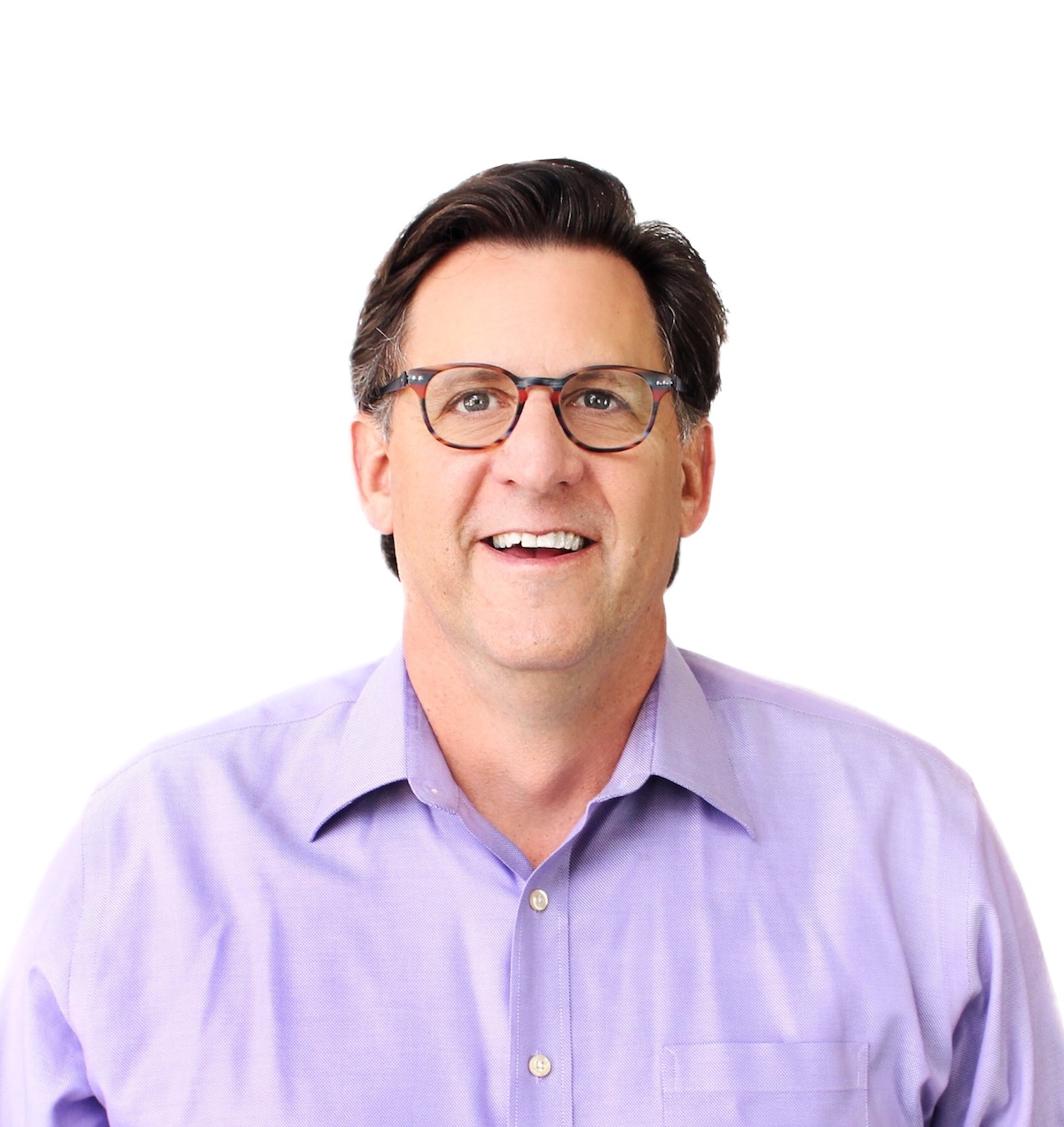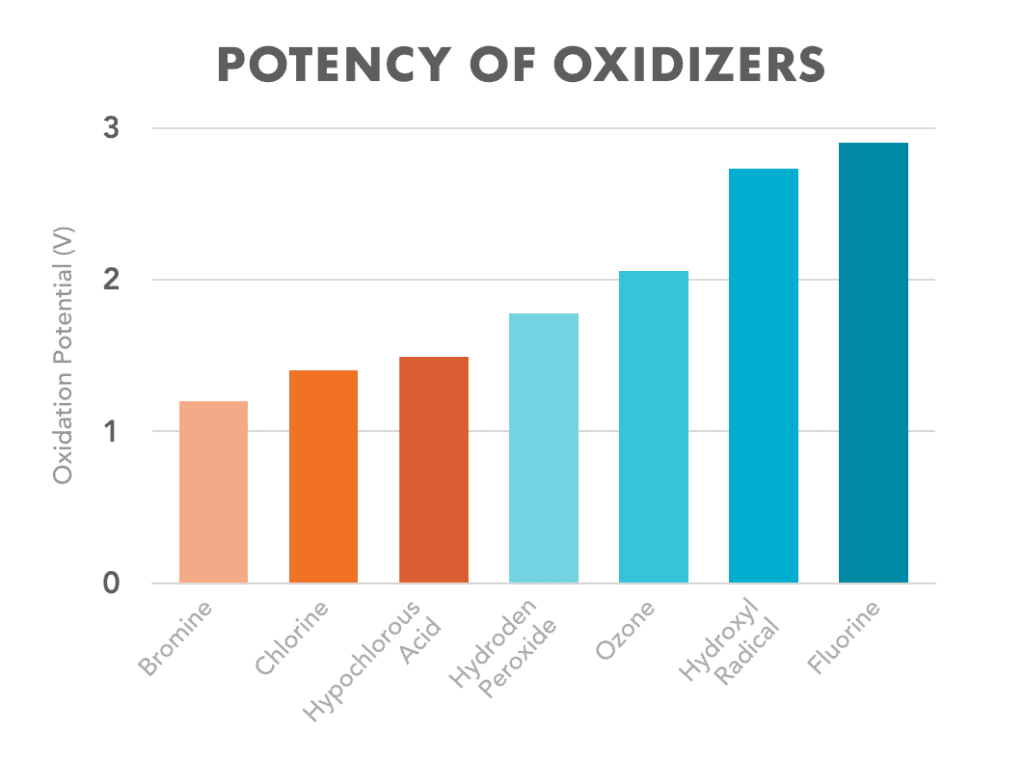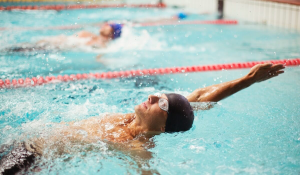Advanced Oxidation Processes (AOP) have gone from unique and rare to mainstream.
Today, you are guaranteed to see hydroxyl and AOP products at pool industry trade shows, in magazines and on the internet. That’s because new technologies are making it easier and more affordable to use this type of sanitization in swimming pools.
The Mighty Hydroxyl Radical and the History of AOP
Hydroxyl radicals are negatively charged radicals that form when one oxygen and one hydrogen atom combine. Oxygen (O2) is destabilized to become O1. It then joins with hydrogen in the water to make hydroxyls.
The hydroxyls are unstable and highly oxidative. As the radicals look to stabilize, they seek out things such as organisms and minerals. When hydroxyls attach to cells and substances, they disrupt their composition causing breakdown and destruction.
In pools and spas, hydroxyl radicals will destroy oils, sweat, bacteria, viruses without toxic byproducts. Hydroxyls have become especially relevant lately because they are strong enough to kill chlorine-resistant cryptosporidium parvum – which have increasingly become a concern, particularly in commercial pools.
Hydroxyl radicals make up one of the most oxidative compounds available for use in pools, and their potency can keep pool water clean and clear with less chemistry.
Until recently, AOP systems all utilized ozone in combination with ultraviolet light to create hydroxyl action in the water.
One of the first uses was for drinking water in Nice, France in 1906. Industrial, municipal and drinking water treatment application helped ozone to gain popularity. Today, it has become the standard offering for spas and has even seen some success in swimming pools.
The rise of AOP’s popularity in pools was triggered by customers’ increasing concerns for health, wellness and a low-chlorine alternative.


Ways to Create Hydroxyl Radicals
There are a few ways of creating hydroxyl radicals for treating pool water. New methods and technologies have also arrived on the scene, offering customers more choices. Because of these newer developments, including direct hydroxyl injection, AOP systems have become more widely available for swimming pool sanitation.
* Water Electrolysis
An older way of creating hydroxyls is to place a battery in the water. A cathode and anode, usually silver and copper, cause a reaction when they decay. This reaction rips apart water molecules to create hydroxyls.
* Ozone
These systems inject ozone, or O3, into the water and oxidize contaminants upon contact.
* AOP Systems
Ozone-based AOP systems create ozone, or O3, inside a chamber by passing the oxygen through light energy or electrical energy. The ozone is then dissolved in water and passed through a UV lamp to create a chemical reaction that results in hydroxyl radicals.
Like ozone alone, these systems reduce the need for chlorine, though a residual is still needed to sanitize the water.
* Direct Hydroxyl Injection Systems
Direct hydroxyl injected AOP systems work by treating oxygen in ambient air around the system to create monatomic oxygen, or O1. The O1 is injected into the water through tubes, producing large amounts of hydroxyl radicals in the pool plumbing.
When large amounts of hydroxyls are created, measurable residual hydrogen peroxide is left in the body of water. Direct injected hydroxyl-based AOP systems do not require water to flow through the system itself.
In residential pools, these systems can work without a chlorine residual, unlike ozone- and UV-based technologies. In commercial applications, however, a residual is needed.
The Opportunity is Here
As customer needs shift, pool professionals will need to understand the options available for healthier, simpler and better ways to manage a pool. By investing the time to understand the industry’s options, leading pool pros can serve as the customer’s advocate and consultant, while improving their bottom line.
Source: Pool & Spa News





